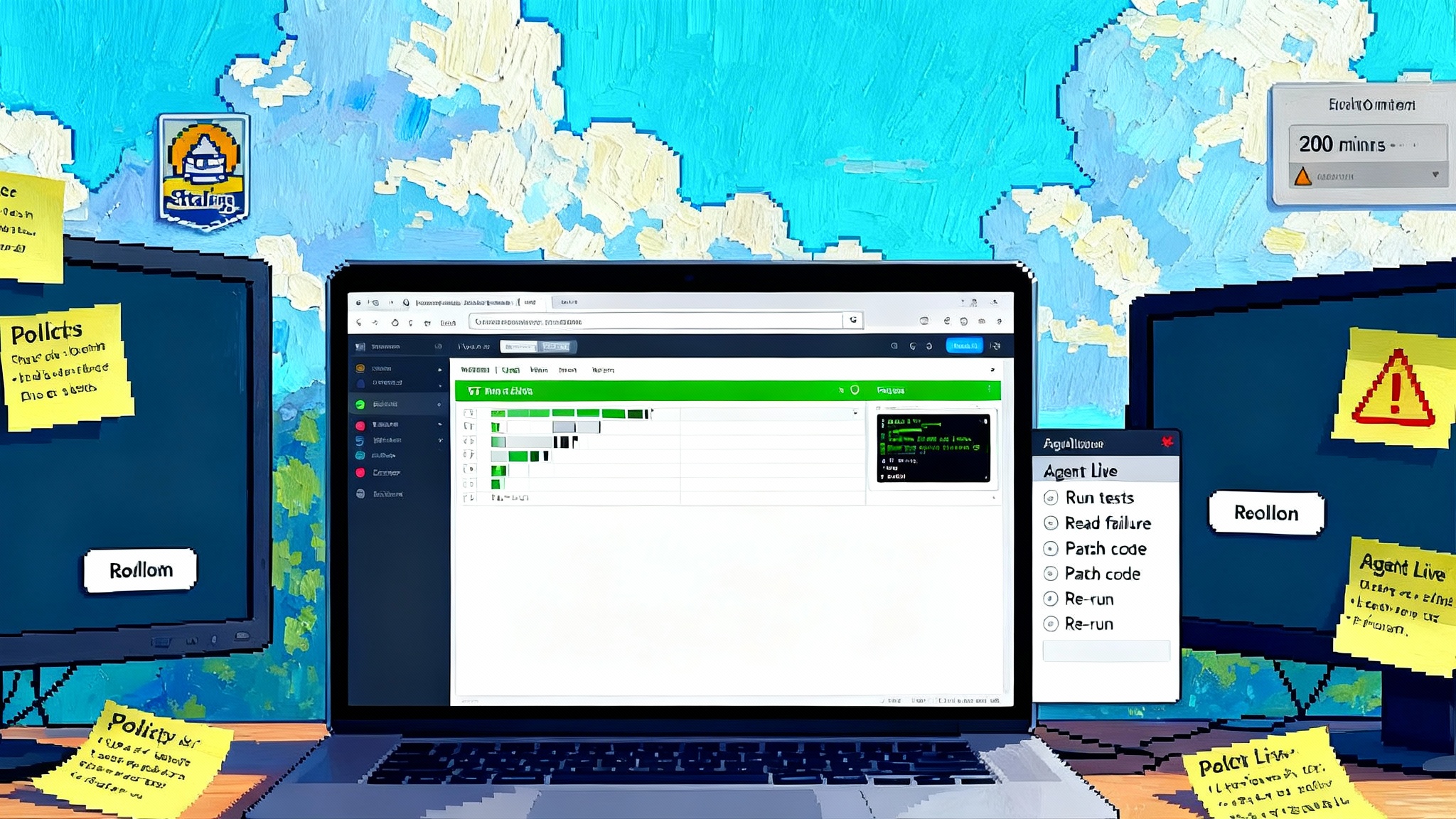Crescendo’s multimodal AI unifies support in one thread
Crescendo’s new system puts voice, text, and images into a single support thread. See the architecture, why it changes pricing and first‑contact resolution, and how to pilot a real multimodal assistant in 90 days.

Breaking: a single conversation for voice, text, and images
On October 28, 2025, Crescendo announced Multimodal AI, a system that lets customers speak, type, and share images inside one continuous support thread. No channel swapping, no separate tickets, no context lost between calls and chats. In a demo, a shopper could talk to an assistant, upload a photo of a product, and keep typing clarifications without restarting the case, all while the system pulled live account data in the background. Crescendo framed the launch as a first for customer experience. For contact centers that have been stitching together bolt‑on chatbots for years, this is a pivot point. Read the announcement details.
This is more than a shiny feature. It signals a shift from a patchwork of bots and handoffs to a coherent conversation where the customer chooses how to express the problem and the system adapts in real time. When all modalities live in one thread, the assistant can perceive, reason, and act with far fewer handoffs.
Why bolt‑on chatbots hit a ceiling
Most chatbots were added to existing stacks like spare rooms built onto an old house. Each room had a different door and a different set of rules. A voice bot lived in the interactive voice response tree. A web chat bot lived in a widget. Image intake happened inside a form emailed after the chat ended. When any of these needed data, they reached through brittle adapters or waited for a human to retype account details.
The result was predictable. Systems worked in demos, then fractured under volume. Conversations were linear and fragile. If the customer switched from typing to talking or needed to include a photo, the bot either failed or created a new ticket. Context and momentum evaporated.
A unified multimodal thread changes that. The conversation becomes a single container that can hold multiple streams. Think of it like a group chat with your favorite friend who also happens to be a mechanic and a concierge. You can talk, text, and drop a photo of the warning light. The assistant hears you, sees the image, and remembers your last two visits. There is one case and one memory.
The architecture that makes it fluid
Under the hood, fluid multimodal support looks like five layers that work together.
- Real‑time voice loop
- Low latency microphone capture and echo cancellation
- Streaming speech recognition that produces partial transcripts and timestamps
- A conversational turn manager that decides when the model should speak versus wait
- Speech synthesis that can interrupt itself if the user speaks mid sentence, so the assistant yields control naturally
- Visual intake and perception
- An image pipeline that ingests photos or screenshots and creates structured observations such as detected objects, text extracted with optical character recognition, and confidence scores
- A policy that decides when to request another angle or a clearer photo, and when to switch to text confirmation
- Shared conversation state
- A single state store for text messages, voice transcripts, and visual observations, not three different logs
- A resolver that reconciles conflicts. If the transcript says “Model B” but the image shows Model A on the label, the system asks a clarifying question before proceeding
- Live data and tool connectors
- The assistant calls business systems for prices, warranties, order status, device telemetry, and policy rules
- Instead of custom one‑off webhooks, the connectors follow an emerging standard called Model Context Protocol with a consistent interface explained in OpenAI’s developer docs
- Reasoning and guardrails
- The model plans multi‑step actions, but every answer cites the data it used and the policy it followed
- Guardrails block unsafe actions, redact personal data, and require human approval for refunds or replacements above a threshold
The simplest way to picture this is to imagine three camera feeds pointed at one stage. Voice, text, and images all observe the same scene. The orchestration layer edits them into one film in real time, and the data connectors fetch the props the scene needs.
Why this unlocks outcome‑based pricing and higher first‑contact resolution
Outcome‑based pricing means you pay for resolved problems rather than minutes of talk time or seats of software. Multimodal systems make that practical because they can observe the entire journey in one thread and measure resolution with confidence. They know that the call, the chat messages, and the photo of the damaged hinge belong to the same case. They can verify that the replacement order was created and the customer confirmed success.
Two mechanisms drive higher first‑contact resolution:
- The assistant collects the right evidence on the first pass. When a customer can send a photo while talking, the system avoids follow‑up email loops. For hardware and consumer goods, visual confirmation avoids model confusion and serial number typos. For software, a screenshot of the error plus a log snippet reduces guesswork.
- The assistant can act, not just answer. With standardized connectors, it can reset a subscription, look up entitlement, or create a return merchandise authorization while the customer is still on the line. Less juggling between teams means fixes in one conversation.
On the vendor side, unified threads also reduce incentives to overcount “conversations.” A traditional bot might end a chat and start a new one when a phone call begins, effectively double counting. A multimodal agent keeps everything inside one case, tightening the link between service cost and customer outcome. That makes outcome pricing feasible and fair for both sides.
If you have been following the rise of agent governance and approvals in operations, the same discipline applies here. For a deeper view of how approvals shape safe automation, see how others approach approval gated agents in MSPs.
Inside a modern multimodal support flow
Picture a parent with a folding stroller that will not lock. They open the brand’s support page and tap the voice option.
- The assistant answers, transcribes the parent’s description, and asks for a quick photo of the latch.
- Computer vision confirms the model and version. The assistant reads the warranty status by pulling from the commerce system and the product database.
- The conversation state shows the parent previously asked about a replacement strap, so the assistant checks inventory in the nearest warehouse to consolidate shipping.
- The parent prefers text, so they switch to typing. The assistant keeps the same tone, confirms the exact part, and offers a brief instructional clip. The same thread now holds audio, transcript, image, and a short video reference.
- When the latch is confirmed defective, the assistant creates a return merchandise authorization, schedules a pick‑up, and texts the label, then summarizes the case for quality review.
No channel switches. No new ticket. One outcome.
What this looks like in your stack
A typical pilot adds three pieces without replacing your entire contact center.
- Ingest and orchestration: a gateway that accepts voice streams and image uploads, merges them with chat messages, and writes a unified event log
- Model and guardrails: a reasoning engine, retrieval tools for your knowledge base, and safety controls for redaction and approvals
- Connectors: tool endpoints for your order system, entitlements, payments, authentication, and case management
Under the covers, the pilot likely relies on four enabling technologies.
- Real‑time voice: a low latency speech recognizer, adaptive barge‑in for natural back and forth, and a voice that can change speaking rate when the customer sounds stressed
- Visual perception: object detection for parts and labels, optical character recognition for serials, and a prompt strategy that converts perception outputs into precise questions
- Model Context Protocol connectors: standardized tool calls to systems such as commerce, logistics, billing, and ticketing so you are not writing glue code for every task
- Unified analytics: one schema that captures all modalities and actions for reliable measurement
If your organization is moving from demos to production, it helps to study playbooks that turn experiments into revenue. For perspective on the commercialization path, explore how teams turn agent demos into businesses.
How to pilot this in 90 days
Here is a concrete plan that teams are using now.
- Pick two journeys and define the finish line
- Choose one hardware flow with visual steps, such as warranty parts, and one software flow, such as password reset with an account lock check.
- Define a single success criterion for each, for example first‑contact resolution with no human transfer.
- Ground the assistant in your existing knowledge
- Use your current policy documents, macros, and knowledge base articles, not a separate script language.
- Build retrieval that quotes the paragraph it used and stores that citation to your case record.
- Wire up the minimum viable tools
- Connect identity, orders, and refunds for the commerce flow, and authentication plus device telemetry for the software flow.
- Where possible, expose these tools through Model Context Protocol so you can swap models or vendors without rewriting integrations.
- Stand up the voice loop and visual intake
- Configure streaming transcription with per‑turn timestamps so you can correlate voice with actions later.
- Add image upload to your chat interface and set file size limits and safe content filters.
- Guardrails and privacy before launch
- Automatic redaction of payment cards, addresses, and health data in transcripts and images.
- Action allowlists. Refunds above an amount require a human click. Tool prompts must include signed user intent and case identifiers.
- Consent prompts for recording and a fallback to text only if the customer declines.
- Measurement and experiment design
- Define a single event schema. Every turn commits observations, actions, tool results, and human handoffs to the same record.
- Report first‑contact resolution, containment, average handle time, transfer rate, repeat contact within seven days, refund leakage, and customer satisfaction. Track them by intent, not by channel.
- Set an A/B plan for two policies, such as aggressive self‑service versus conservative escalation rules.
- Rollout and training
- Start with weekday hours. Add overnight once you have incident playbooks.
- Shadow human agents for the first week. Agents watch the assistant, then swap roles for a day so the assistant watches them.
Privacy and accuracy, handled upfront
Good pilots make privacy and correctness a feature, not an afterthought.
- Data minimization. Keep only what you need. If you do not need raw audio after creating the transcript and embeddings, store the transcript and delete the waveform.
- Redaction and structured storage. Transcripts should carry redaction markers and a field that lists redaction types by turn. Image uploads should store a safe hash and a detected objects list, not just a blob.
- Source grounded answers. The assistant should cite the policy paragraph or product record that drove the answer and save that citation in the case. When support leaders audit outcomes, they can see why a decision was made.
- Tool isolation. Treat every tool as untrusted. Use allowlists for function names and strong parameter validation. Never pass raw model text to tools without a contract and sanitization.
- Human in the loop. If confidence drops below a threshold or a tool fails, the session escalates with a clean summary and the customer stays in the same thread.
What to measure, and what it means for budgets
Multimodal threads let you measure what matters because they remove the guesswork of cross channel stitching. The metrics below help decode budget conversations.
- First‑contact resolution: the percentage of cases closed without a human transfer. Multimodal should raise this because evidence collection happens early.
- Containment rate: the share of sessions handled by the assistant end to end. Watch not just the rate but the distribution of reasons for escalation.
- Average handle time and time to first action: high quality assistants act quickly. If the time to first tool call is long, the assistant is probably asking too many questions.
- Refund leakage and policy adherence: when you log the policy citation used per decision, you can audit generosity or drift in real time and correct it with training data, not a memo.
- Net satisfaction and trust signals: pair the post chat survey with behavior signals, such as whether the customer opens the follow up email or recontacts within a week.
When these are instrumented, pricing can shift to outcomes. You can negotiate per resolution or per intent rates with clarity about which cases are in scope and how partial credits are handled when a case needs a human for an allowed reason.
How this differs from yesterday’s agent architectures
Traditional bot stacks treated voice, chat, and images as separate channels. They synchronized data through the ticketing system after the fact. That approach created blind spots, which vendors tried to fix with dashboards and rules. The problem was not the dashboard. It was the missing single thread.
Modern multimodal agents start from the conversation. The thread is the source of truth and the ticketing system becomes a subscriber to that truth. The assistant does not just answer questions. It perceives the situation through multiple sensors and acts through well defined tools. This is why the same architecture that delights customers also makes outcome pricing possible.
If you want to see how specialized vertical stacks are evolving in parallel, look at how legal tech is moving toward fabrics of cooperating services. The shift described when Harvey debuts the Agent Fabric shows the same pattern of orchestration and standardized connectors.
What enterprises should do next
- Map your top ten intents by cost and frustration. For each intent, note whether a photo or screenshot would accelerate resolution. Those that benefit from visuals belong at the front of your multimodal roadmap.
- Clean your policies, not your prompts. If your refund policy is contradictory across two documents, the assistant will inherit that conflict. Fix the source material first.
- Choose two to four tools to expose through a standard interface such as Model Context Protocol. Start with identity, orders, and refunds. You will reduce lock in and speed up future model swaps.
- Decide your escalation rules. Name the conditions that require a human and bake them into the guardrails now.
- Build a single event log for all modalities and actions. It will pay dividends in measurement, audit, and training.
The 2026 outlook: agents woven into the stack
By 2026, customer support stacks will treat multimodal agents as first class citizens. Instead of sitting in a widget, the agent will be a set of services in your architecture. Voice will be just another stream. Images will be first pass evidence, not an afterthought. Data connectors will be standardized and secured. Human agents will get cleaner escalations with a living summary and the exact policy snippets the assistant followed.
Several trends will accelerate adoption:
- Voice becomes ambient again. As speech models improve and interrupt naturally, customers will use voice with confidence even on noisy mobile connections.
- Visual proof reduces fraud and confusion. A quick photo of a serial number or damaged part will settle many cases without debate.
- Outcome pricing grows. Measurement will be strong enough to make per resolution contracts common in mid market and enterprise deals.
The lesson for leaders is simple and practical. Pilot now, in one or two journeys where visuals matter. Insist on a unified thread and standardized tool access. Treat privacy and accuracy as product features. If you do that, you will be ready when multimodal agents stop being an add on and become the backbone of support.
The bottom line
Crescendo’s launch is a clear signal. The industry is moving from stitched bots to single thread, multimodal assistants that perceive, reason, and act. The technology is ready. The playbook is clear. Bring voice, text, and images into one conversation, ground it in your real data, and measure outcomes instead of minutes. Teams that start now will set the standard customers expect in 2026 and beyond.








